Whatever image “Slovenia” conjures in your mind, I’m pretty sure this is not it.

This has to be truly one of the most puzzling places I’ve ever been. Once under the control of the Habsburgs, Slovenia is overrun with Austrian cultural influences that remain prominent today, but it later became a part of Yugoslavia. Idyllic and modern are not the first words that would come to mind when describing a very recent ex-communist state, but there’s no other way to describe Slovenia. Culturally, everything in the capital city feels very Austrian, and whatever cultural impact the Yugoslav government had on Slovenia is hard to detect today.
This comparison is not totally analogous, but I’ve previously been to the Czech Republic, usually considered one of the most successful ex-communist states in Europe, and it feels like it’s taken much longer to move on there. Prague is a developed city, with a lot of modern infrastructure alongside a lot of very old history, but you can definitely see the effects of the communism and the continued attempt to deal with them.
Slovenia couldn’t be further from that. Aside from the language, which sounds very Slavic/Russian, you would probably think you were in Switzerland if you were just dropped here. The capital, Ljubljana, is like a scaled down version of Amsterdam. The scenery is both dramatic and bucolic. Certain aspects are still a little quaint, bordering on archaic. In the middle of Bled—not a city but a reasonably sized town—someone was keeping a pony in their front yard. The countryside still seems very sparsely developed, but in other ways, it’s more modern than neighboring Italy. It’s immaculately clean. Gas stations are brand new and paying doesn’t require an abacus like at half the petrol stops in Italy. The infrastructure is in excellent condition. Being a country of a paltry 2 million people has its pros and cons, but Slovenia comes on stronger than a country half the size of Los Angeles. By comparison, neighboring Austria has 8.6 million people and is roughly four times the size, but it doesn’t feel significantly bigger to me. Obviously there’s nothing in Slovenia to compete with a city like Vienna but with only 2 million people, it’s amazing just how much is there, and how urban and sophisticated it is.
Bled
Venice—Bled, 180 miles

My first stop was Bled, the hub of the Julian Alps region, a popular area for hiking and alpine sports, though not a lot of downhill skiing. Bled is “famous” (a bit of a stretch) for the church constructed on an island in the middle of Lake Bled. Human remnants from the 10th century B.C. have been found on the island, where there was once a shrine to a Slavic goddess, before it was converted into a Christian church.
On an opposite cliff, Bled Castle balances on the edge of a cliff with the imposing Alps rising in the background. The effect is, predictably, quite dramatic.




Summers are high season here, though the landscape looks pretty spectacular now with the mountains still fully covered in snow. Bled isn’t anything special, just your standard issue outdoorsy hippie village, but there’s a lot of activity here for a town of 6,000 in the not-quite high season. Insomuch as Slovenia is touristy, Bled is the center of it due to its undeniably beautiful setting, but there are tons of small alpine towns in his corner of the country that are even quieter. The effect of the whole place is very Sound of Music, which is hardly shocking given its location. Driving through the mountain passes and nearby Triglav National Park, you’ll cross through Italy and Austria without even realizing it.



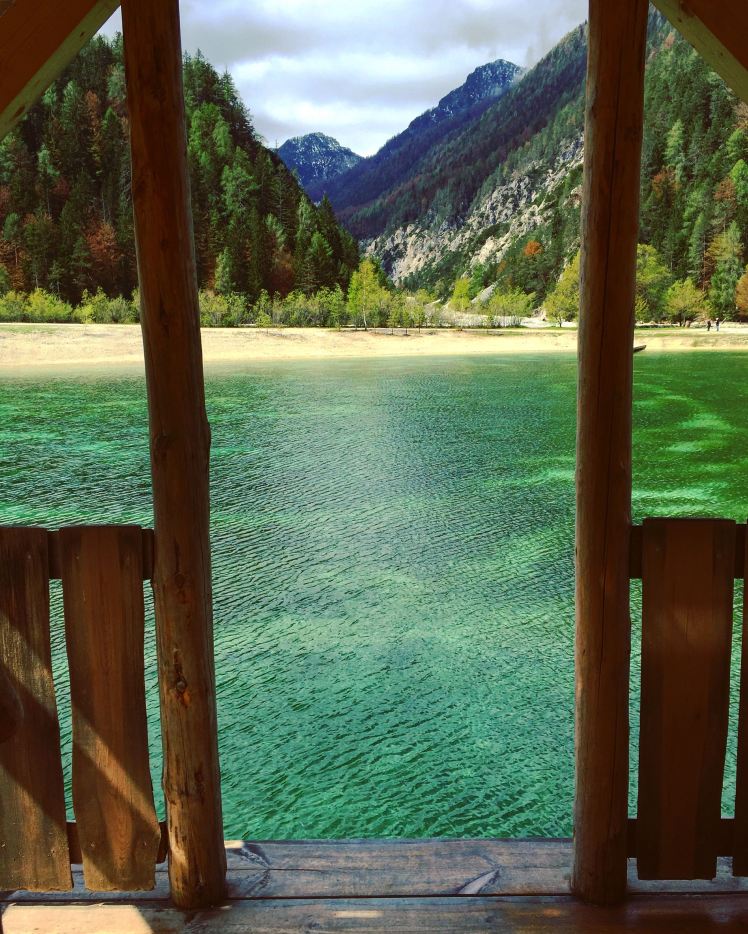
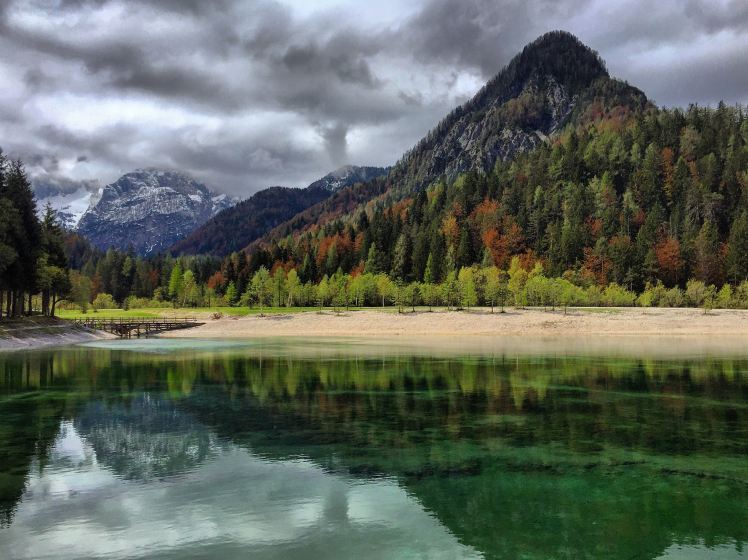
Bled’s, and Slovenia’s, only positive contribution to the food world is the kremna rezina. If you’re familiar with a millefeuille, this is essentially just a double-stuff version of that, with a fluffy-custard cream thing piled thick between two pieces of flaky phyllo dough. It is as good and gluttonous as you would imagine.
Culturally Bled has almost nothing on offer, but that’s obviously not the point. This part of the Alps is not quite as dramatic as some of what you see in Switzerland or Austria, but it’s still completely transfixing, and everything is as well organized as in other parts of the Alps in terms of trail maps and signage. They’re fighting an uphill battle when it comes to tourism because most people will opt for its more well-known, more developed neighbors, but of everywhere I’ve been in the world so far, Slovenia, and particularly this area around Bled, is one of the most overlooked and underrated places I’ve seen.
Ljubljana
Bled—Ljubljana, 34 miles
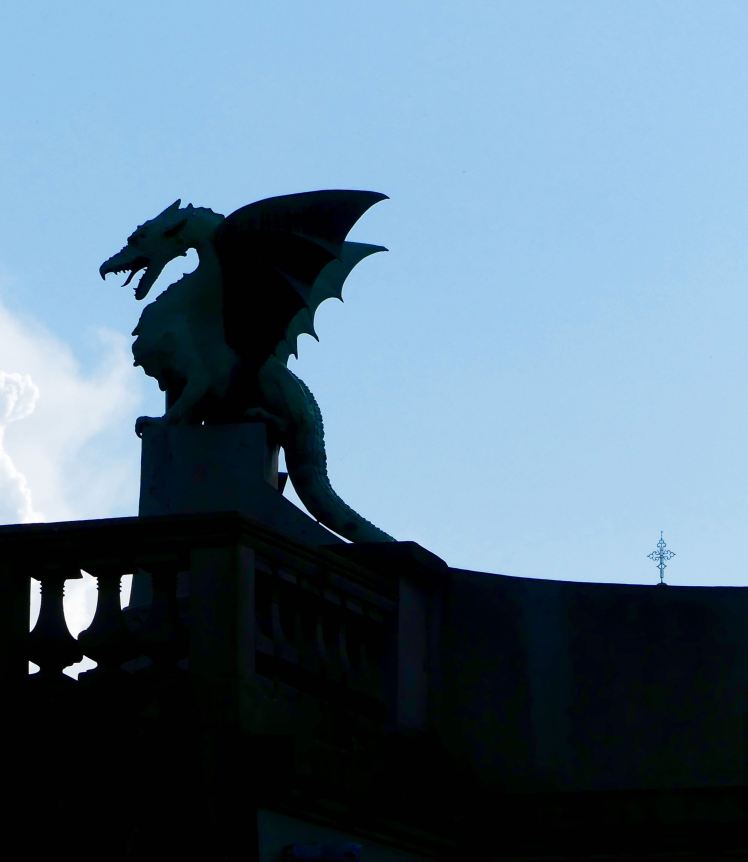
After Bled I headed to the capital. Ljubljana (pronounced loo-blee-ah-nuh) has an incredible atmosphere. It’s so lively and it’s so refreshing to see a small city in Europe where the locals are still the majority. I arrived on a beautiful Friday in May, so admittedly any city is going to look its best under those conditions, but Ljubljana has an atmosphere that seems totally disproportionate to its relatively small population of 280,000.
As with half the rest of the planet, Ljubljana was once Roman, later falling prey to Attila the Hun and the Ostrogoths. The Habsburgs eventually got ahold of it and Ljubljana was later occupied by the Italians during World War II, before it became the capital of the socialist republic as part of Yugoslavia.
The city’s most dominant feature, like seemingly every European city of its size, is a castle perched on top of a hill overlooking the city. Otherwise the cityscape is very Austrian, with multicolored Baroque facades, cobblestone alleys, a collection of intricate bridges spanning the Ljubljanica River, and several sprawling public squares with large fountains.
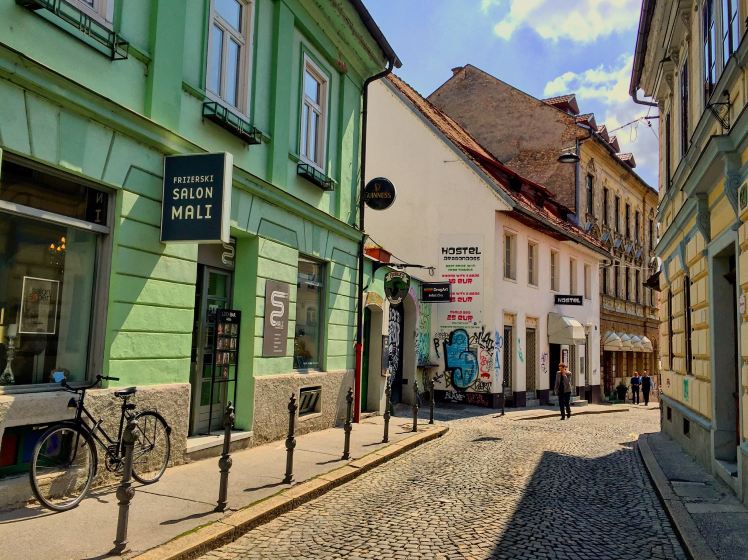



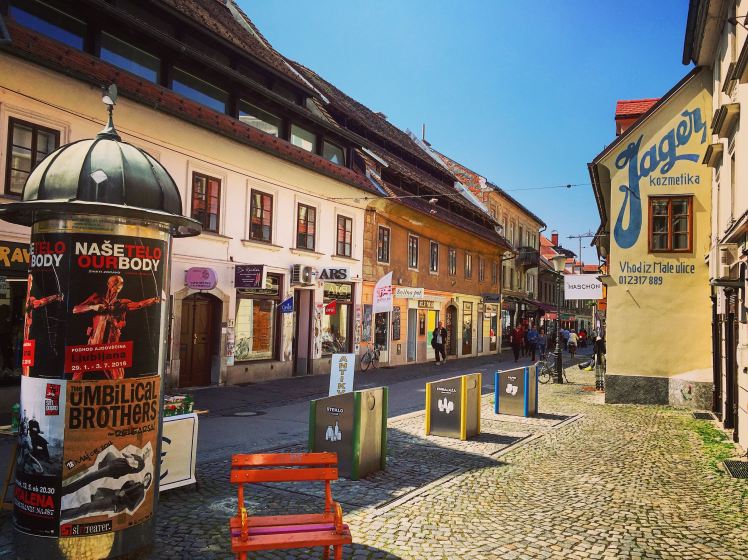

Slovenian food isn’t about to take the culinary world by storm any time soon, and they’ve clearly realized this. It’s not unspeakably bad or anything, but like the Brits, they’ve outsourced good food to Asian countries. Indian, ramen, sushi, Vietnamese, Thai–for a relatively small city, there’s a tremendous amount of culinary variety in Ljubljana. They’re also really into burgers; every other restaurant is a hip burger joint, intermixed with brewpubs and coffee shops.
Every Friday is Ljubljana is Odprta Kuhna (“open kitchen”) day, with all of the above on offer as well as every other kind of food conceivable, including a shockingly good “Al Capone hot dog” that was as true a Chicago hot dog as you can get short of the celery salt. I had some Pad Thai that while not the best I’ve ever had, it definitely did not disappoint, and I am amazed that a city of this size can sustain this kind of an operation every week.
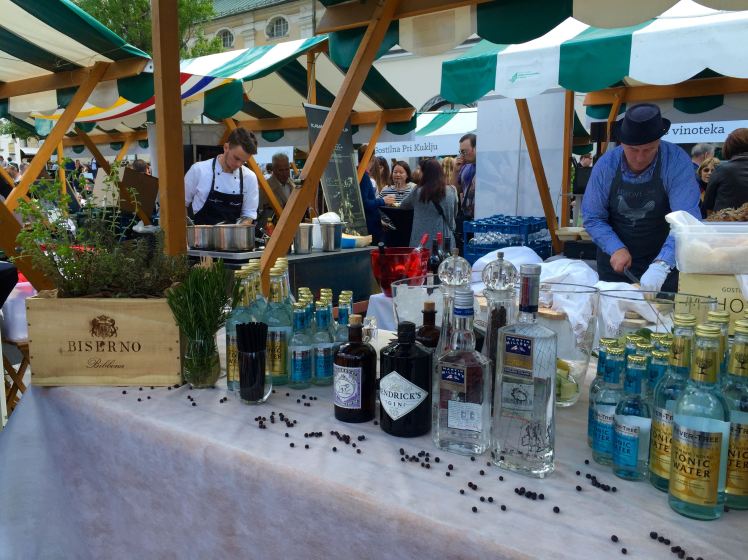
This food festival happens in a large-ish square along the river and there was quite a bit of infrastructure in place for this thing. When I came back less than 12 hours after it ended on Friday night, it had already transformed into some health and wellness Veg Fest with people leading a group yoga session in the middle of the market area on a sunny Saturday morning.
The vibe here at night is awesome as well. There’s not much in the way of ultra-hip clubs in Ljubljana, but there is still a very active nightlife, one that is civilized: people drinking at quiet wine bars or having respectfully raucous drinking bouts at well-maintained bars and spilling out onto riverfront patios. There’s not drunken sprawling on the street or seedy dive bars. At night walking around Ljubljana, it seems like such a young city. By day, it’s all families.
Saturday morning, 9 a.m.: a time when no European city is ever awake. There was a race in town the morning I was there and people were out in droves cheering on runners and having brunch. To cap off this utopia, eating ice cream at 10 a.m. appears to be totally normal here, so all the ice cream shops in town were packed with kids at a time when everyone else on the Continent was still asleep.
Near the center of the city is the self-explanatory Triple Bridge, connecting the old town with the newer parts of Ljubljana. This same morning, on one side was a group of high school age boys who’d formed an oompah band, and they had probably 15 instruments between them that they kept rotating in and out. On the other side of the bridge, we were treated to the musical stylings of Jesus and his drums.
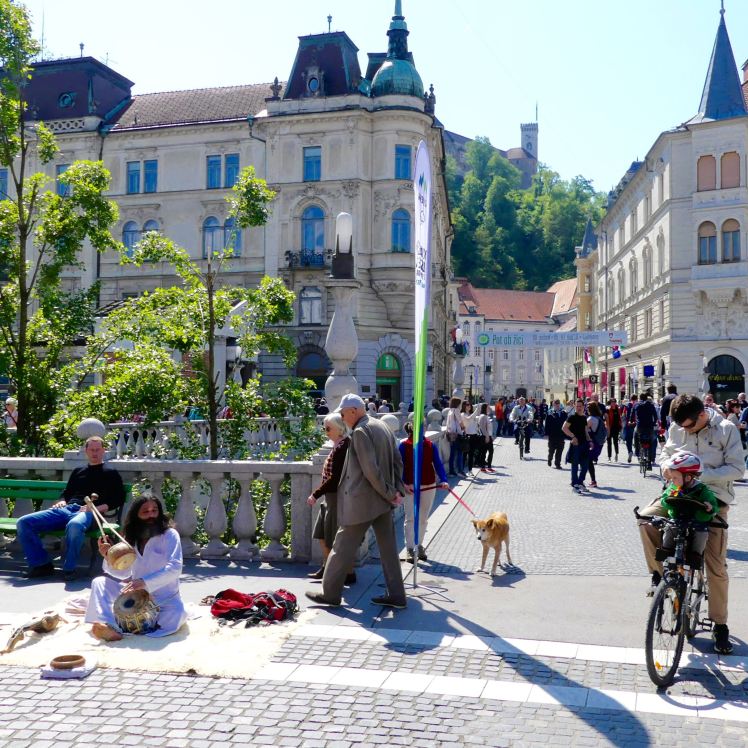
This is all happening before 11 on a Sunday, a time when almost no city feels very active, but it seems like no matter what time it is, people are out doing stuff and enjoying their city.
If you Google Ljubljana and what to do there, one of the first and most common suggestions is to visit Metelkova. This scattered collection of buildings was a military barracks during the Yugoslav era and was the site of fringe culture movements and protests during the country’s socialist period. Today it more or less has continued to be a center of all things grungy and alternative.
In reality, this is probably the lamest and least interesting part of the city.
The history of this neighborhood is cool, but the fact that Slovenia is no longer socialist has kind of taken the wind out of their revolutionary sails. Essentially it’s turned into what I’ll generously describe as a poseur haven. This place is trying SO HARD to be edgy. It’s both painful and hilarious to witness.





Literally nothing about this is hardcore. It’s so contrived and so desperate to seem cool, which is the exact opposite of the image it’s going for. I do not understand who hangs out here or what it is that they do. The only people I saw were a bunch of tourists and a homeless guy who seemed totally amused that we thought this was something of note. Metelkova is basically what a set designer for a CW show would commission for a scene that’s supposed to be on the “wrong side of the tracks” with burning trash cans and other strategically placed “random” detritus to give the appearance of grittiness. Honestly, do not waste your time here. If Ljubljana was otherwise uninteresting, that would be one thing, but this is such an amazing city. Why anyone would recommend hanging out in an overly spray-painted alley is beyond me.
I’m told there’s a fairly large alternative subculture scene that exists in Ljubljana. Obviously I’m not going to be the one to fill you in on this, but to its credit, it does not seem very visible, which unlike Metelkova, actually lends it some credibility as an underground scene.
I defy anyone not to love this city. It’s super active, it’s full of young people and young families and well-behaved children and jovial old people, and everyone seems to always be having a good time. In January, I imagine things are a little more calmed down but this is not a tourist town, so there’s no high season. Kids probably still want their 10 a.m. ice cream even in the dead of winter.

I’m almost indignant about Slovenia when it comes to tourism. Why are we not talking about this place? I would imagine that they’re maybe not terribly effective at marketing themselves, or they actively choose not to pursue tourism to avoid potential negative impact. But even so, I don’t know how this has managed to evade European must-see lists for so long.
Traveling here as an American couldn’t be easier. It’s a very affordable country, particularly so at the moment with the dollar being so strong, and everyone speaks near-perfect English. Everyone is also ridiculously friendly. I was crossing the street one morning and a guy rolled down his window to apologize that he was stopped in the crosswalk (because of traffic) while making a right turn.
I genuinely cannot think of anything bad to say about Slovenia, and I really tried to come up with something. There’s a surprising amount of graffiti in Ljubljana, and nacho cheese shows up on menus perhaps a bit more often than is strictly necessary. That’s basically it.
Their gravest sin seems to be that they are the country from whence Melania Trump hails, a national burden they are pretty deeply embarrassed about. Because if there’s one group who should feel ashamed about Trump, it’s definitely the Slovenians.
Ljubljana is not the most cosmopolitan city in Europe, nor are the Alps here the best hiking on the Continent. If you want the Matterhorn or the cultural diversions of a place like Vienna, this isn’t going to give you your fix. But damn if this wasn’t one of the biggest surprises of my trip, and I can’t think of many other places where I was at a loss to find at least one less than desirable trait. I’ll be forever baffled that this isn’t a more popular place to travel.
My next stop was a place not lacking in good PR in the tourism world right now. Croatia is the hot spot in Europe at the moment and it’s been absolutely booming recently. I didn’t realize until I got here that Game of Thrones filmed in Dubrovnik, which certainly hasn’t hurt. While it wasn’t the worst by any means, I’m not about to fall over myself about its greatness. So you’re going to want to check back after that tepid endorsement.
Thanks, Abbey! Slovenia is my favorite country on the planet. No one gets why I’ve visited twice in the past few years. While visiting the little church in the middle of Lake Bled, a visiting local choir spontaneously broke out in their national hymn, with the music echoing across the lake. I had a full on, sobbing, geek attack. Not unlike Sochi during the Olympics. As the Slovenian Team checked into the hotel, a certain older woman accosted the poor athletes, chatting them up unmercifully.
LikeLiked by 1 person
Thanks, Nancy! So sorry I missed this comment earlier. I love this anecdote so much. I doubt they have a strong fan base, so I’m sure they appreciated it
LikeLike
I hate when I load up on negatives, especially with a journalist. Mercilessly or unmercifully.
LikeLike